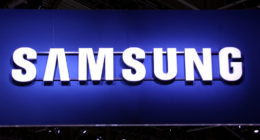Apple is about to receive over S$10 million from Singapore banks and financial institutions that offer Apple Pay. According to sources, the Cupertino giant charges S$2 million-S$5 million per bank as marketing fee.
This is reportedly done to support Apple Pay’s branding, on top of high 0.1-0.2 per cent transaction fee. Or it lies between 10 and 20 cents per hundred dollars. There isn’t much difference in what US banks are charged which revolves around 12 cents per hundred dollars.
Sources reveal each financial institution pays different marketing fee. Apple pay is offered by DBS, OCBC, Standard Chartered, and UOB – and recently American Express joined the wagon. Estimating the least value, even if each of the five institutions paid S$2 million, Apple would grab a whopping S$10 million for this deal.
This is excluding the high transaction fees that Apple will earn from the banks’ existing payment systems – which is influenced by the great number of iPhone users. In an article, Business Times quoted a source saying,
The joke is Apple was known as the one who must not be named. This is basically its exclusive membership fee. It’s a sunk cost.
The fact that annoys banks the most is that Apple does not take credit risk for Apple Pay. If there are fraud incidences as a result of the payment platform, its them who bear the cost. On the other hand though Visa and Mastercard provide a security measure called tokenisation. It allows users to verify mobile contactless transactions using either their thumbprint, or a PIN. This process replaces the card number with a unique digital number, known as a token. Merchants see this token, not users’ credit card number, which limits the odds of the card details stolen from them.
The banks could have stood against this fee together, but they didn’t because they were “kiasu” – Singapore’s distinct brand of fear of losing – and chose not to call Apple’s “bluff”, a source comments. They did not have much to make their side strong against Apple. Apple had sold 74.8 million iPhones from October to December last year.
Banks are trying to cover the contactless payment space and expand the service to as many users as possible. They are widening their offerings to other payment platforms like Citibank offers Apple Pay as well as Samsung Pay. (But who dominates the market cannot be ignored. Samsung Pay does not charge fees neither does Google’s Android Pay.) It is a way for banks to ramp up transactions in Singapore and abroad. And, over time cut costs by encouraging customers to go cashless. The nation’s government is also taking steps to incline Singaporeans towards seamless, cashless, payment systems. In a related move, the Land Transport Authority will roll out a pilot to allow commuters to tap their credit and debit cards to pay for bus and train rides by the end of this year. This will enable commuters can stop having to top up their stored value cards.
There are also significant developments in the global mobile payments market which could have major effects here as well. Visa and PayPal in July signed a deal in the US to allow PayPal’s app as a payment option in American brick-and-mortar stores that accept contactless Visa payments. This could change the negotiating power that banks have over Apple in time in the digital payments space.
There are plans to standardise the retail point-of-sale terminals, so customers have to use just a single terminal to read all kinds of credit and debit cards. In time, more banks should also allow interbank fund transfers via mobile phones.
Meanwhile, its hard to gauge the success rate of Apple Pay. About 100,000 bank-issued cards in Singapore were enabled for Apple Pay in the first two weeks of its launch. Since then, Banks have stopped providing Apple Pay figures – which indicates the power behind controlling the figures too, i.e. Apple.




